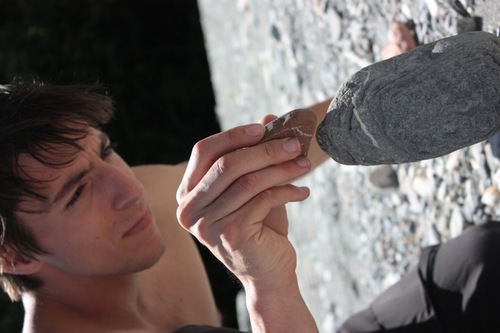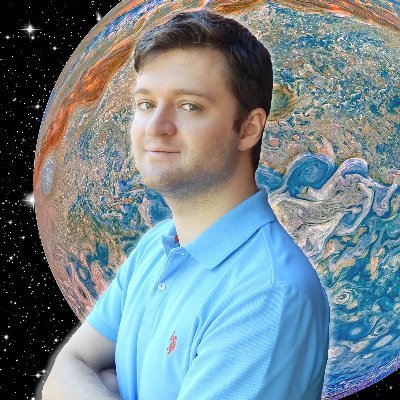
Anders Sandberg
@anderssandberg
Followers
29K
Following
41K
Media
3K
Statuses
27K
(For some reason Claude thought country was the right genre of a song about these papers.) https://t.co/1JxeGhtZHz
1
0
0
I think an ethics issue worth investigating is "maintainability of megasystem ethics": when creating longterm, vast systems how do we ensure they can be both practically maintained, but also ethically kept good (as well as when we want to drop control and let them go).
1
0
0
The recent sketch for Mars terraforming is a mild approach not trying to force it to become Earth-like, despite the assumed speed.
arxiv.org
Terraforming Mars is an age old science fiction concept now worth revisiting through the lens of modern science and technology. This document serves as a summary of contemporary ideas about Mars...
1
0
0
Note that this issue to some extent goes away if intelligent actors are around and can pull the plug on something with a net negative value to itself or the world (or fix whatever is wrong with the system). A good reason for expanding in space, in my opinion.
1
0
1
The main issue where this may matter is wild animal suffering, where several of us panspermia thinkers are worried it may be a major moral concern giving a good reason to hesitate. https://t.co/2cikOCKQwb
https://t.co/mZUVOnhszx
cambridge.org
The Cosmic Significance of Directed Panspermia: Should Humanity Spread Life to Other Solar Systems? - Volume 34 Issue 2
1
0
0
One interesting difference between terraforming https://t.co/XqB6UiPFBy and directed panspermia is that in the former human action is necessarily present throughout, and hence ethical control in principle possible, while this is not true for panspermia and ecopoiesis.
1
0
0
This is one of the core questions I have wondered about in neuroscience. Glad to see that there is some light shed here!
How does the brain balance learning new things without overwriting what it already knows? Our new paper tackles this long-standing stability–plasticity dilemma during active navigation. With @Adrinnenberg from the @KarlDeisseroth lab. (1/8) https://t.co/vBZbzs73Qn
@lisa_giocomo
0
0
9
I believe that we can value human abilities, accomplishments, and culture as well as dream big and build sci-fi futures. There is no reason this is at odds with respecting other living creatures, exercising empathy, and creating a sustainable world.
1
1
12
This sounds like a joke, but making electronics out of egg substances is doable. I think the true takeaway message is that many forms of matter can be turned into computational elements, and complex matter often has many types of properties, making it easier to get desired ones.
Every year, we get closer and closer to a true “Egg Computer”. We’ve already made: - Egg Transistors - Egg Resistive Memories - Egg Supercapacitor electrodes Albumin is a hilariously good organic semiconductor material.
1
0
20
The original air safety instructions, as given by Ovid:
0
0
2
Best mis-speaking of today: "Hegel's Hallelujah Chorus". I had to make it real: https://t.co/bHxiIqTxUH Glory to the Absolute!
0
1
5
How might the world look after the development of AGI, and what should we do about it now? Help us think about this at our workshop on Post-AGI Economics, Culture and Governance!
3
13
58
Today I lectured for four hours about AI, my book manuscript, philosophy and whatnot. I think I learned more than my students. In particular, I realized that queues are (1) awesome coordination mechanisms, (2) just the example my book need, (3) well researched.
3
0
18
Generally, we should expect waste to have lowish free energy. That likely means no plasma waste either. Good to know for longtermist bathroom design.
5
0
8
Shower thought: there will likely not be any beings that excrete Einstein-Bose condensates as waste, since waste is generally high entropy for open thermodynamic systems maintaining themselves and BEC is quite low entropy. Same for laser light.
1
0
7
This is of course of great interest when thinking about building self-replicating machinery. Normally we avail ourselves to the best or most economical possible tools and parts, but when designing replicators we want as few operation types and parts as possible.
0
0
8
Inside that network core there are about 12 precursors that can be used to make nearly anything else.
1
0
7
Also, the core metabolic network in cells is surprisingly small. It is a bow-tie graph where there is a big fan-in to about 150 metabolites that are used for everything and form a densely connected core, and then a vast fan-out to all the specialised stuff.
1
0
8
It is not too weird that we can get millions of possible products using a small toolbox if the tools are general and can be applied in complex sequences. Not too unlike letters in language.
1
0
4




